How Nuclear tests Accidentally Revealed Hidden Mysteries
On March 1st, 1954, American scientist John Clark huddled inside a bunker on a remote Pacific island. He was waiting anxiously as he prepared to detonate the most powerful hydrogen bomb ever tested. The Castle Bravo blast was designed to showcase the peak of nuclear technology. But instead of raining fire, this experiment’s main legacy would be unleashing a stealth global tracer. This helped uncovered secrets about how our planet really works.
Expecting Doomsday, But The Fallout Was Revelation
Two fateful minutes after Bravo’s initiation, Clark’s concrete shelter shuddered under the colossal blast waves. At the same time pipes exploded and power failed. Officials hugely underestimated the test explosion’s strength. It forced Clark’s team to hastily take cover from the intense radiation now sprinkling nearby islands. As dazed personnel evacuated by helicopter, immense surplus carbon-14 atoms from the botched test swiftly circled the entire globe. Thus began illuminating environmental revelations still unfolding today from one accidental act of destruction.
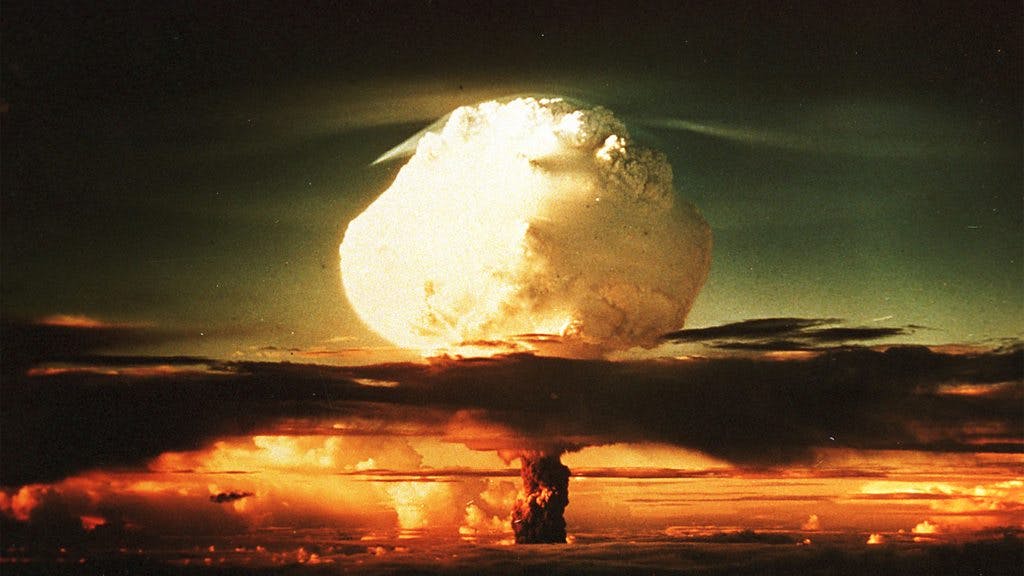
(Credit: Getty Images)
Instruments first revealed Castle Bravo’s shock carbon infusion concentrating within the thin atmospheric layer hovering above commercial airplanes. Termed the stratosphere, this wispy ceiling features distinct circulation patterns. These patterns proved extremely tricky to characterize before radioactive ghosts arose to trace the obscure winds.
Elusive Upper Air Mixing Exposed
Scientists discovered that the Earth’s unexplored upper atmosphere has a barrier that separates the lower atmosphere from the higher altitudes. This barrier keeps most of the pollution from fossil fuels and jetplane exhaust in the lower atmosphere. The protective ozone layer remains safely above. However, small amounts of radioactive particles from the upper atmosphere slowly make their way down to the Earth’s surface through previously unknown openings in the barrier. This was the birth of the Bomb Spike Phenomenon
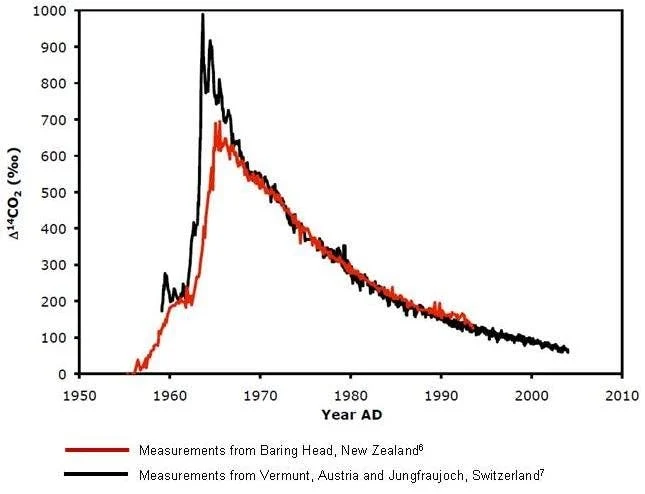
Nuclear testing resulted in the large “spikes” in the early 1960s.
This new understanding of the atmosphere was confirmed when nuclear tests in the Pacific Ocean led to increased levels of radiocarbon in the rings of pine trees in New Zealand. The tree rings served as a record of the growing disturbance in the atmosphere until the Limited Test Ban Treaty of 1963 was signed. After the treaty, the radioactive traces gradually disappeared from all parts of the Earth.
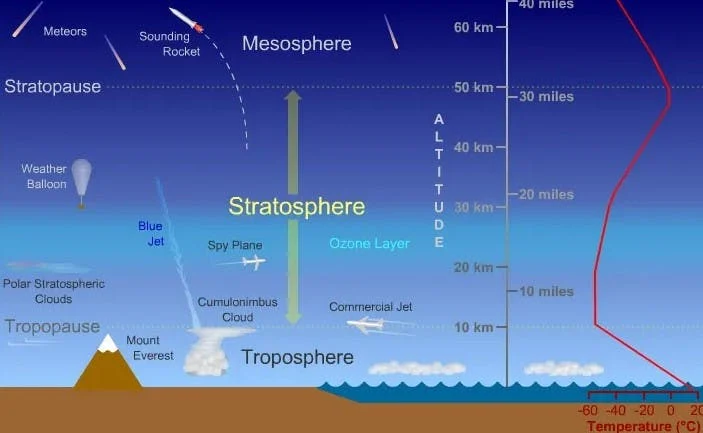
By scied.ucar.edu CC-BY-SA-4.0 via Wikimedia Commons
Ocean’s Hidden Conveyor Belts Illuminated
These hydrogen bomb explosions inadvertently helped scientists also gained insights. It revealed the mysteries of ocean circulation because of the unintentional mark left on undercurrents. This allowed them to track hidden ocean currents. The enormous size and remote locations of the Pacific Ocean made it challenging to study its circulation patterns directly, except in limited areas accessible by ships. However, the dispersed radioactive markers from the explosions secretly spread throughout the global network of ocean currents. This helped reveal their intricate patterns across all the oceans.
In the oceans, scientists detected distinct pulses of carbon. These pulses came from the Castle Bravo nuclear test years after they appeared in the atmosphere. These pulses were carried by large, deep-sea currents called gyres, which move at depths of around a thousand meters. As the radioactive markers decayed over time, they gradually revealed more details about the ocean conveyor belt system. The researchers discovered separate layers of water moving past each other at different depths, cautiously exchanging important substances. The radioactive markers continued to track the suspected thousand-year journeys of even the tiniest particles from the hydrogen bomb fuel. With advancements in technology, scientists wondered what other discoveries they might make in the future.
Whale Songs Reveal Early Climate Shifting
And improve it did, as scientific instruments got better, it unveiled fainter traces over time. Leveraging hard-won knowledge of oceans gained through Castle Bravo’s bomb carbon dispersal tracking, researchers uncovered another climate measure in the shifting songs of migrating whales. Early sonar surveys employing repurposed Cold War hardware surprisingly noted whales’ lowering cry pitches slightly near warmer waters.
Cetacean songs acted as roaming climate communication thanks to lifelong bonds enabling cultural transmission between whales plunging half a mile to feast. Through global acoustic monitoring, their wandering arias reported habitat shifts and disruptions in areas they share with frilled krill.
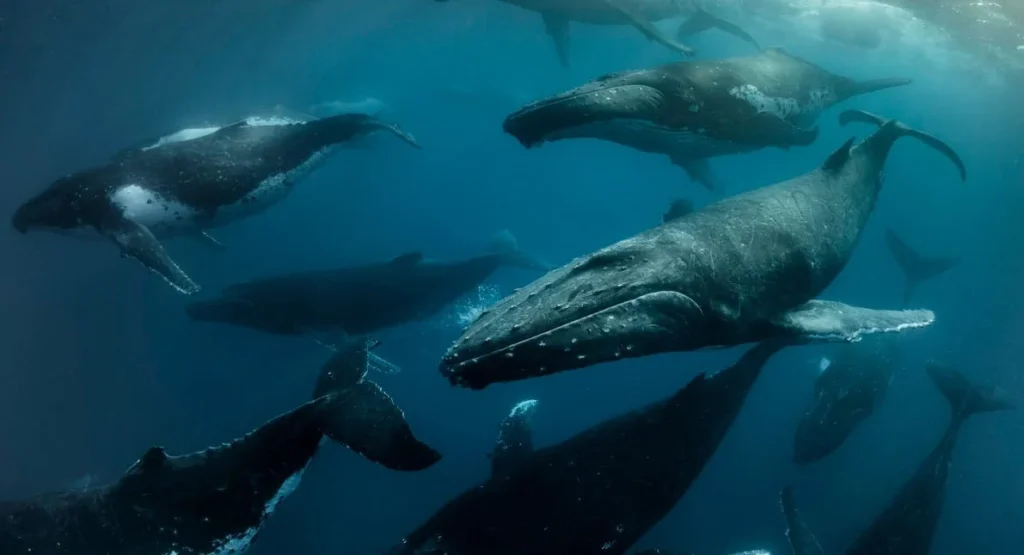
From radioactive spy trail analysis to floating baleen songs, the furious pace of nuclear stockpiling accidentally equipped humanity to survey Earth’s farthest reaches. The Pacific Proving Grounds gained second life as vast environmental tracking stations revealing global systems binding all actors. What revelations might these unlikely investigators relay next regarding extinction risks created by reckless resource appetites and delayed responsibility?
Humanity’s Carbon Emissions Detected Eroding Atmospheric History
Yet later technology squeezed even more shocking finds from regrettable Castle Bravo mushroom clouds no architect planned. Improving precision exposed that a disappearing act was diluting upper air radiocarbon faster than projections anticipated. Discovery soon exposed the surprising culprit – voracious fossil fuel-burning civilization itself!
“It’s shifting from an atomic signal to a fossil fuel dilution signature,” explains Dr. Heather Graven of London’s prestigious Imperial College climate team. By aggressively ramping carbon emissions from factories, transport and energy sectors too quickly, the resultant radical overhaul of atmosphere’s composition has literally begun erasing pre-1950’s historical chemical benchmarks.
“It resembles a slow-motion explosion produced by every last human alive,” observer Jonathan Weiner once noted. This subtle overwriting promises to drive radiocarbon levels well below pre-1954 marks within a few decades. This spotlights profound biospheric alteration from increased consumption already forcing sustainability crises. Like time-traveling chronometers, their quiet precision chillingly exposes the crossroads where tribal priorities steer all futures.
Ocean Ghosts Lead To Bizarre Longevity Findings
Meanwhile, rogue radioactivity’s marine breadcrumbs trail other shocking discoveries like eternal animal life. Carbon-14 dispersal showed most organic residues drifting downwards as “marine snow” feeding abyssal realms. Yet bizarrely, Arctic shrimp-like scavengers captured at crushing depths somehow contained bomb radiocarbon indicating much fresher diets from far above.
Stunned, investigators eventually realized these bottom feeders must selectively filter young nutritious particulates freshly settled from the distant surface layer rather than dead sea floor pickings. The implication being that there is a huge exchange permeating the entire sea column. As a result researchers can exploit these chemical ghosts to map intricate food chains and unseen habitats. Employing radioisotopes scattered earlier by hydrogen bomb tests now helps science uncover Earth’s peaks and trenches.
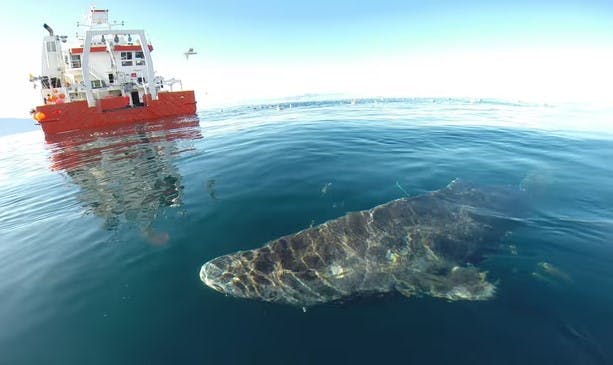
In one final twist, tracing bomb carbon in animal tissues is revealing staggering longevity like 400-year old Greenland sharks. By detailing radiometric growth lines, researchers finely gauge specimen ages to uncover extreme survival adaptation. What else might echoes of misguided prototypes still disclose through tomorrow’s forensics?
Strange Redemption Arc For These Accidental Tracers
Nearly seventy years beyond the fluky Omega Event spawning big science’s most terrifying creation, Castle Bravo’s nuclear ejecta continues giving information no security analyst dared predict. Instead of total detonation, thermonuclear technology’s debut birthed isotopic tracers essential for unveiling planet dynamics and climate science. All at the very moment civilization locks trajectory toward collapse or survival.
Weapons intended solely for annihilation, accidentally generated ways to revealing Earth’s hidden workings instead. As we gradually wake toward environmental guardianship, we face the bittersweet reality that dangerous weapons ended up giving us insight into how to be better stewards. Now we must finally heed their warnings resonating through tree rings, baleen hums, and steadily declining bomb carbon inverse spikes showing humanity’s fearful trespass. Though future tribes may forget what whispering ghosts still surround them, the messages echo on in every vulnerable ecosystem we borrowed from past ages.
Have humanity’s unintentional alarm-sounders gathered critical enough urgency to awaken action preventing biosphere breakdown? Do lingering echoes of hastily-abandoned shelters where Armageddon scripts first drafted now confirm mankind’s strained capacity for avoiding catastrophe without direct experience? However uneasily traced, may salvation walk the byways of revelation after all…since truth often materializes indirectly where science respectfully harvests knowledge despite complex and uncontrolled roots.



